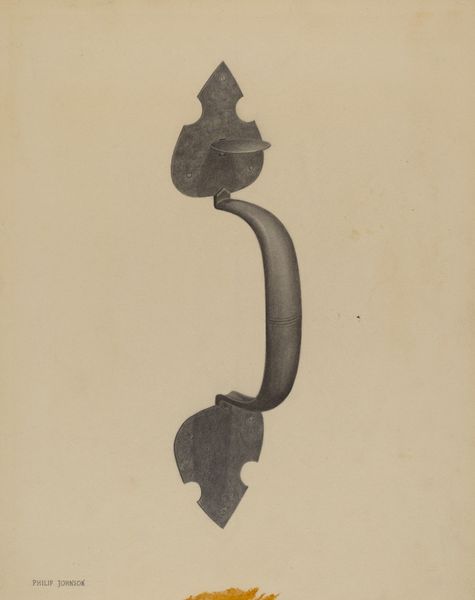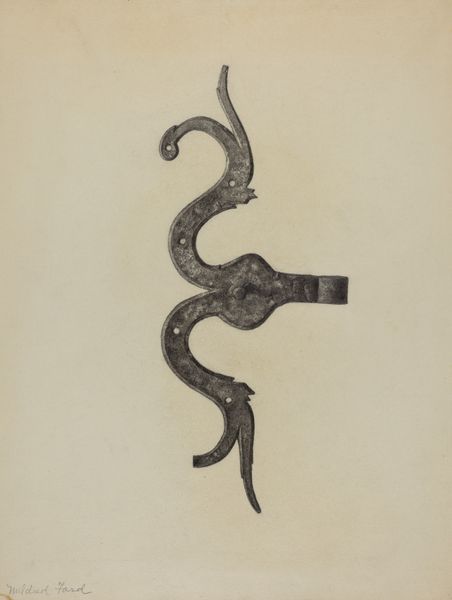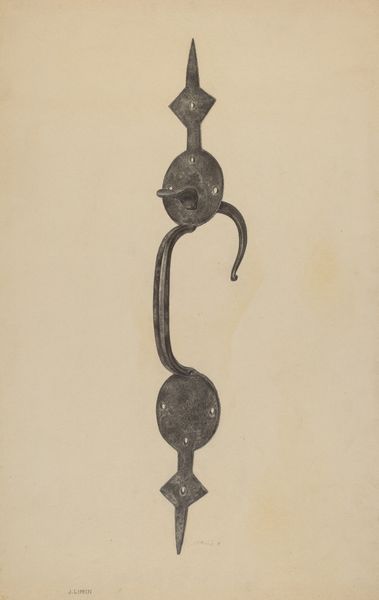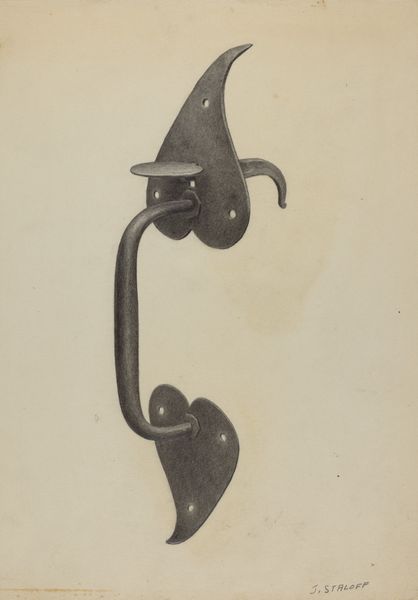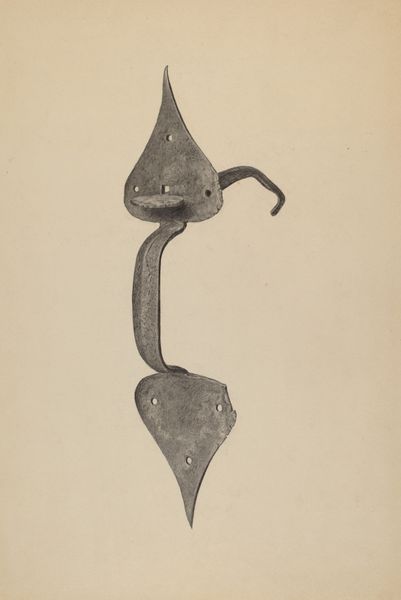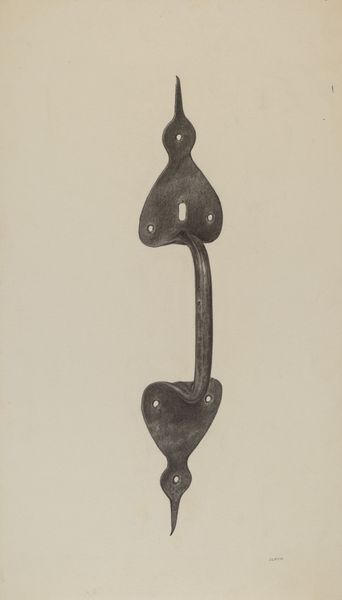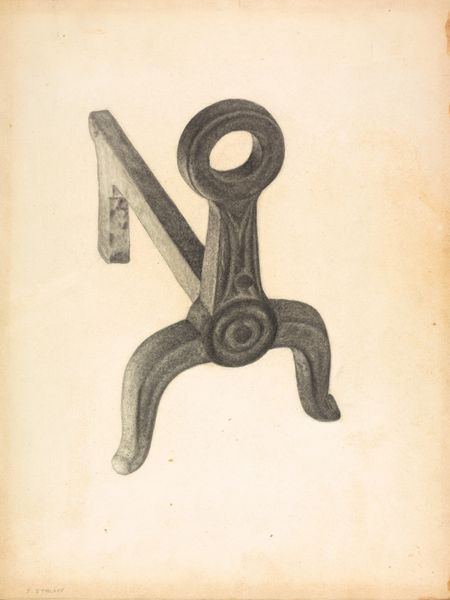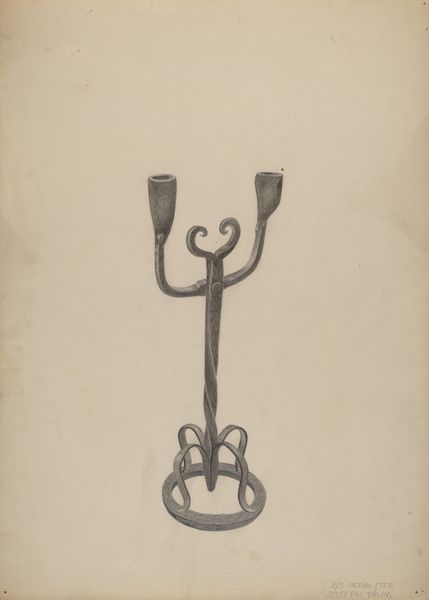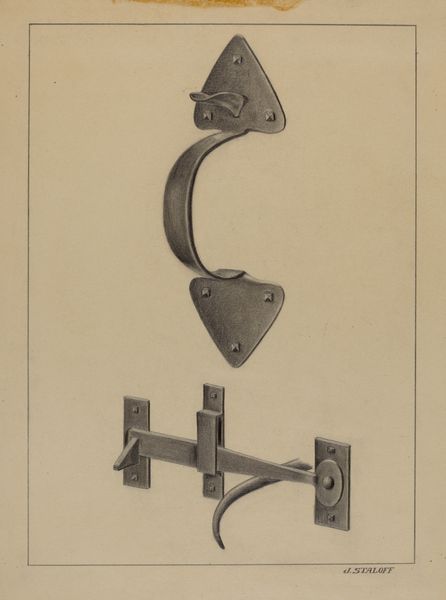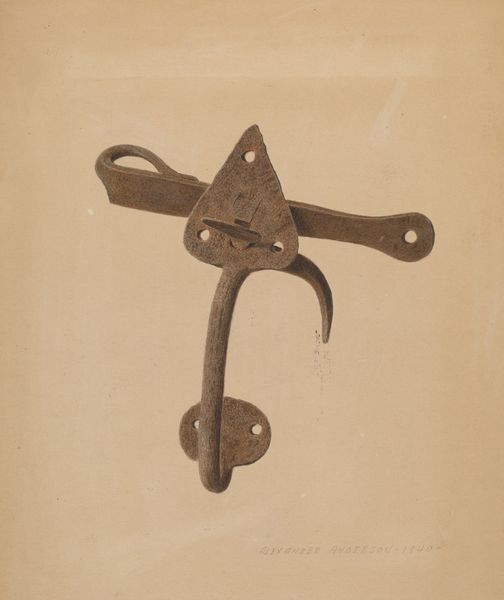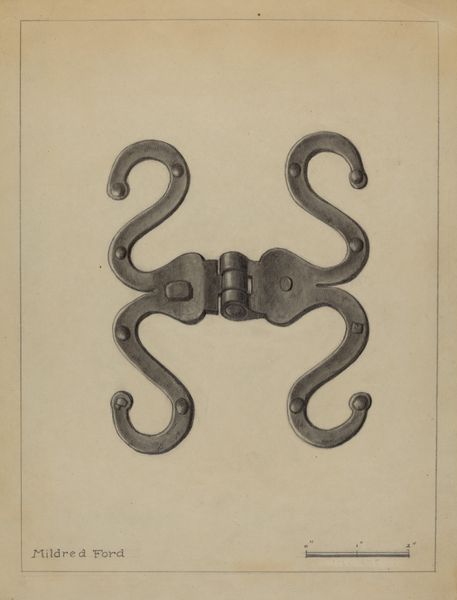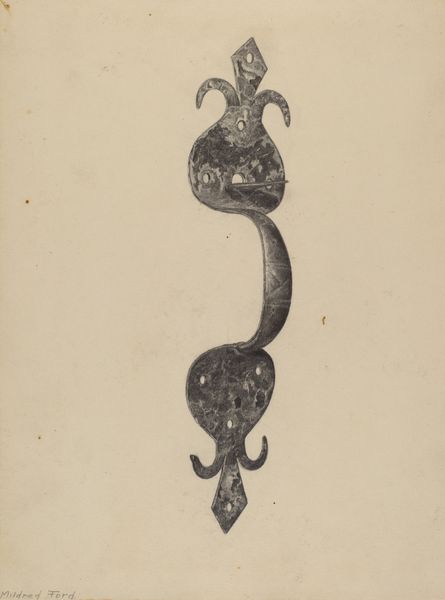
drawing, paper, pencil, graphite
#
drawing
#
paper
#
pencil
#
graphite
#
watercolour illustration
#
watercolor
#
realism
Dimensions: overall: 28.8 x 22.5 cm (11 5/16 x 8 7/8 in.)
Copyright: National Gallery of Art: CC0 1.0
Curator: This drawing from around 1938 by Maurice Van Felix is titled “Door Handle.” It's executed in graphite, pencil, and watercolor on paper. The subject matter is depicted in exacting, realistic detail. Editor: It looks stark and isolated, doesn’t it? Suspended in this creamy field of paper. There is a cool industrial elegance, but almost like an artifact disconnected from the door that gave it purpose. Curator: The interesting thing about commonplace objects elevated in art, is their symbolic potential. A door handle inherently speaks of transition, of access and exclusion. How might social contexts shape our understanding of these ideas? In the pre-war era, as this drawing was created, barriers and divisions were being constructed across Europe, so something so simple takes on heavier significance. Editor: Yes, and the drawing emphasizes its material nature; look at the almost scientific precision with which the artist renders its texture, its cold, possibly rough surface and what seem to be rust spots. Van Felix prompts consideration about its actual production – where was it forged? By whom? What’s the story of the metal itself, where it comes from? How do these objects mediate access? Curator: The formal approach and the medium, combined with this domestic utilitarian object is quite a subtle juxtaposition. By isolating the object in the frame he almost implies, it suggests themes of alienation from design. Editor: Do you see any irony there? The handle *facilitates* physical access – opening some possibilities, maybe, whilst the drawing is very much mediated by its style, representing or re-presenting access via its materiality. Van Felix lets the texture hint towards social narratives, and wider tensions from manufacturing to consumerism in 1930s Europe. The surface is loaded with the historical tension you describe. Curator: That makes me consider accessibility, as the concept applies to marginalized identities, for example, within broader sociopolitical systems. This elevates “Door Handle” to something far more provocative. Editor: Absolutely. Ultimately it underscores the profound power inherent in the most ubiquitous and unassuming parts of the man-made world, and how that intersects and influences access at so many different levels.
Comments
No comments
Be the first to comment and join the conversation on the ultimate creative platform.
